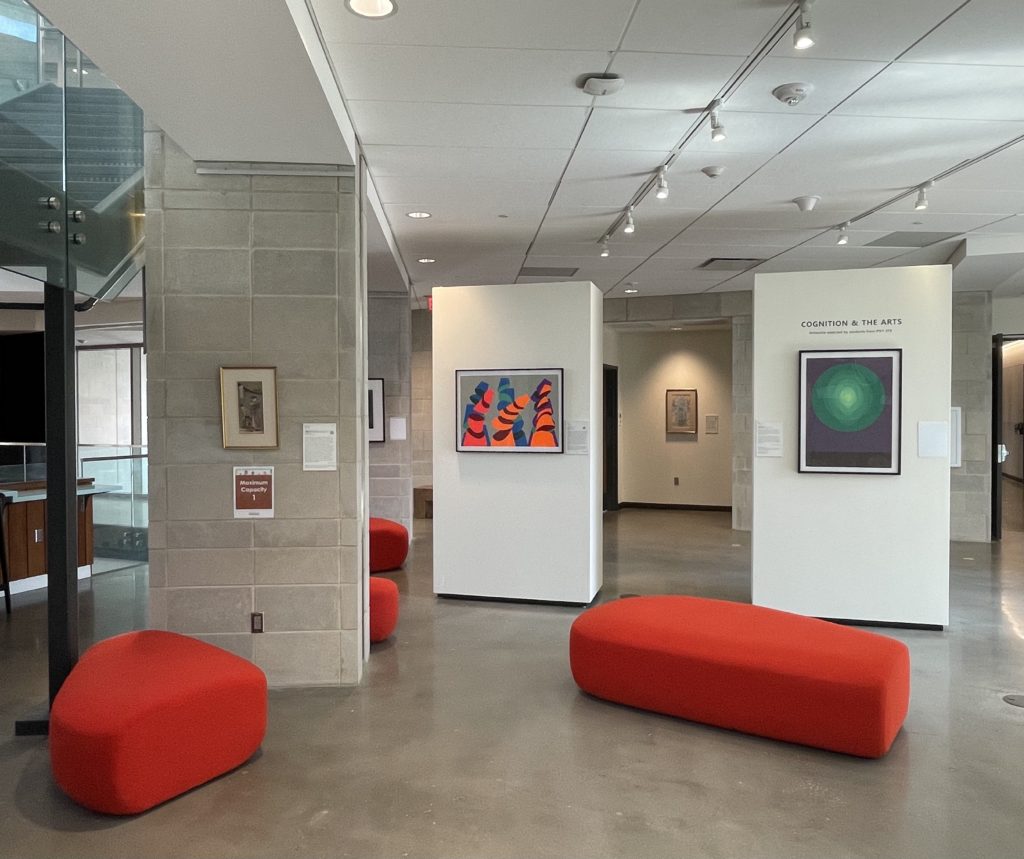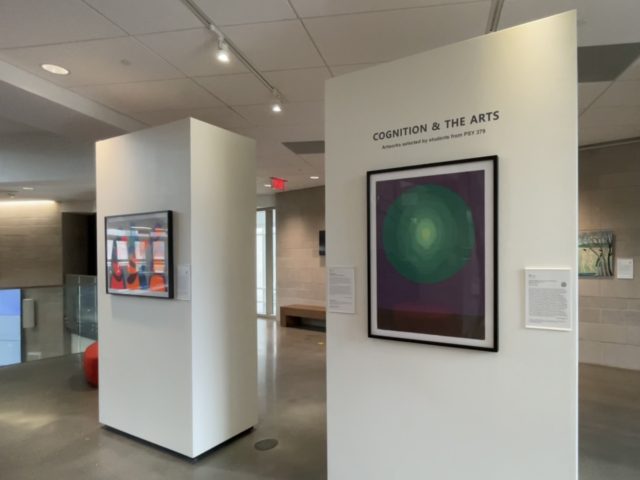While the exquisite sensibility, expressiveness and enthusiasm of the arts seem to be incommensurable with the subjectivity, rigorousness and metallic coldness of science and technology, the two areas have never been closer than they are right now.
With the new insights gained from scientific research, we are able to better understand ourselves and how we see the world. In Fall 2020, students in Psychology 379: Cognition and the Arts applied what they learnt about perception to experience art from a different perspective. They were invited to explore the archive of the Van/Every Smith Galleries at the Belk Visual Art Center to find works that intrigued them. The students then investigated how basic visual elements of their chosen artworks shape their aesthetic experience through non-traditional literature reviews. The artworks as well as a brief summary of their papers are now showcased in the E. Craig Wall Jr. Academic Center, the science hub of Davidson college, in an effort to encourage students to see the world through different lenses.
Dr. Greta Munger, the psychology professor at Davidson College who instructed PSY 379 class, shared with us how cognitive psychology and art are both means for us to understand the world better, except that she, as a psychology scientist, sees arts as potential variations of visual stimuli. For example, psychologists found that sharp transitions in contour convey a sense of threat and arise negative bias (Bar & Neta, 2006). At the same time, various artworks employed sharp outlines to express negative emotions. Together, science and arts provide us with insights into our response to visual elements.

The Cognition & The Arts exhibition summarizes various parallels between research findings and artistic approaches. With the knowledge of a systematic bias when determining fixation distance with reference to gaze vergence, Sarah Zhang ’23 re-interpreted the Japanese woodblock print Courtesan and her Attendants. She argued that the overriding significance of the observer’s frame of reference when deciding fixation distance attested to the subjectivity that objectified the female figures.
Dr. Munger’s class is a perfect example of the ease and creativity with which we can bridge the gap between sciences and the arts at Davidson College and more broadly. Her students were able to use their expertise in the field of Psychology to better understand and appreciate our permanent art collection in the same way that art lovers will gain new insight into these pieces by reading about how they reflect studies of cognition and perception.
Cognition & the Arts will be on display through May 21, 2021 in the Hamilton W. McKay Atrium of the E. Craig Wall Jr. Academic Center. Learn more about the exhibit here.
If you’re interested in further exploring the intersection of arts and sciences on campus, read this blog post about another one of Dr. Munger’s Psychology classes and her students’ reflections on pieces in our permanent collection.
Music in video: Timeless by Neutrin05 https://soundcloud.com/neutrin05
-Sarah Zhang ’23 and Alice Berndt ’22

